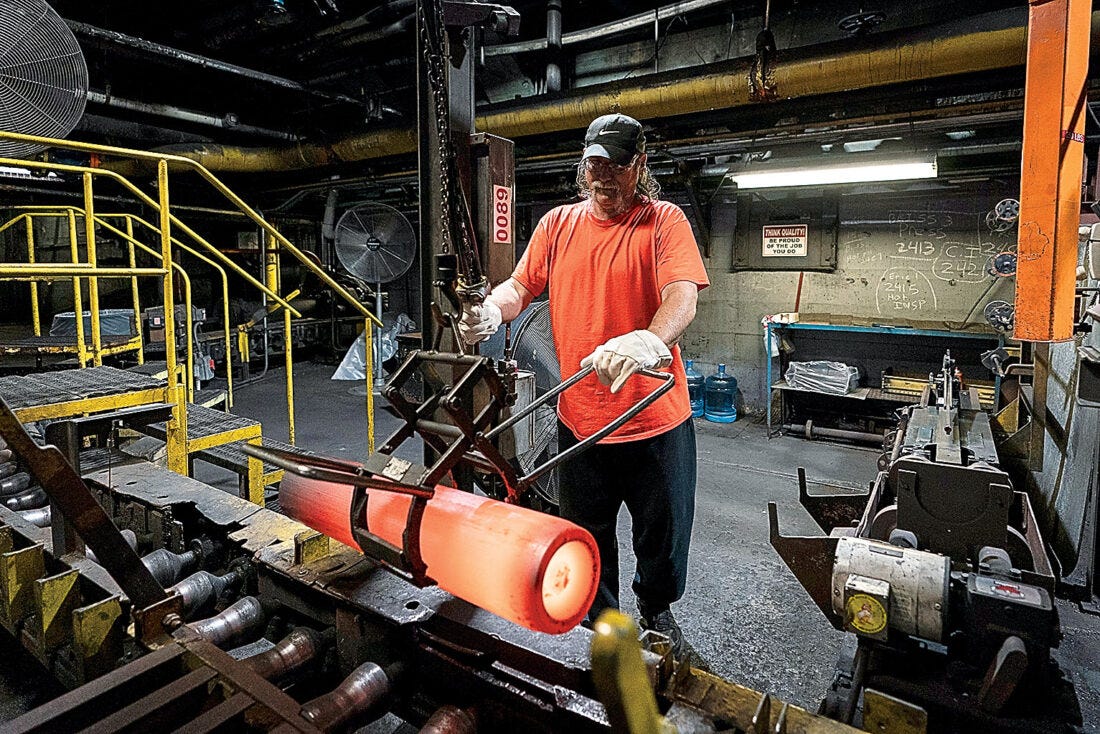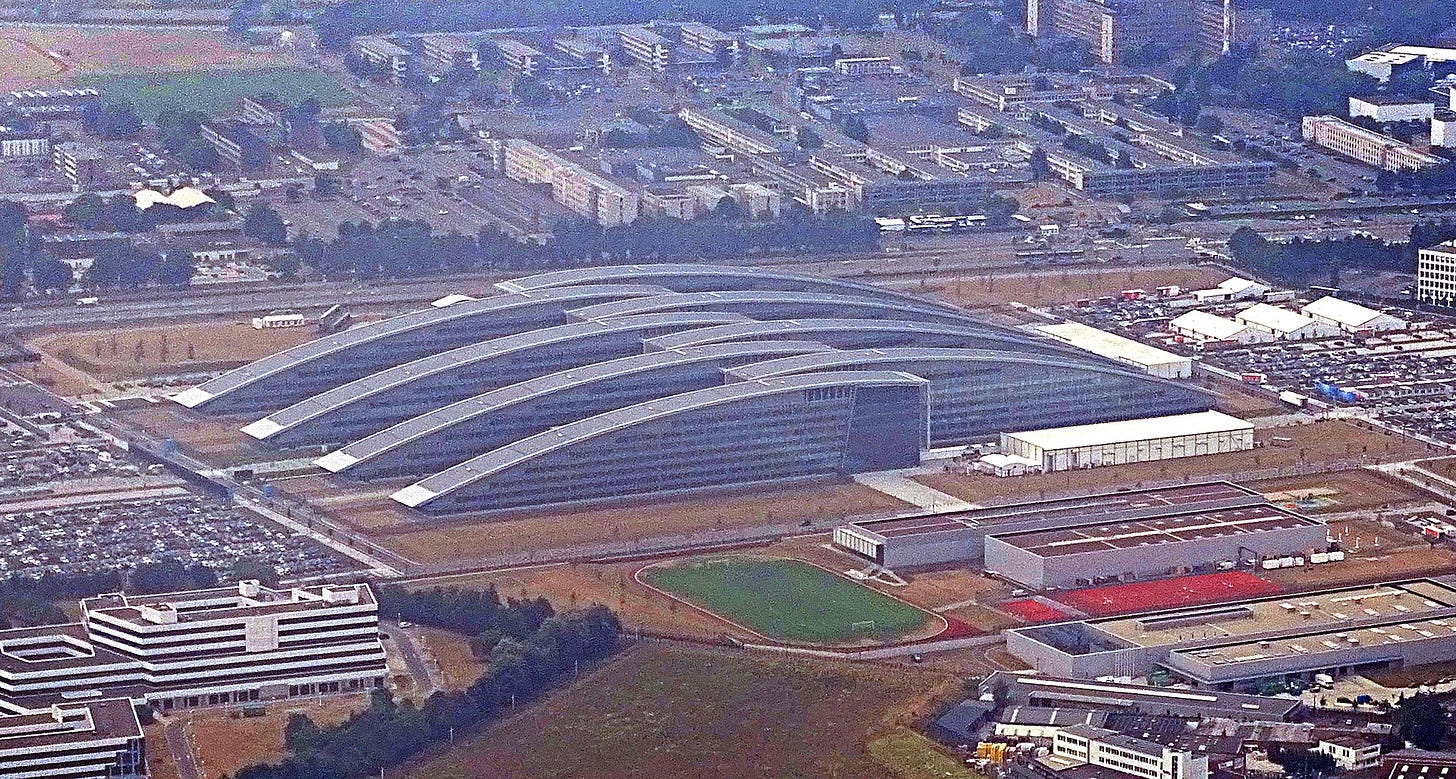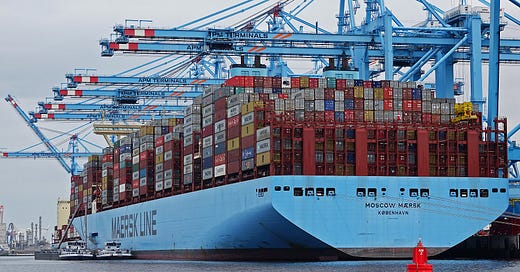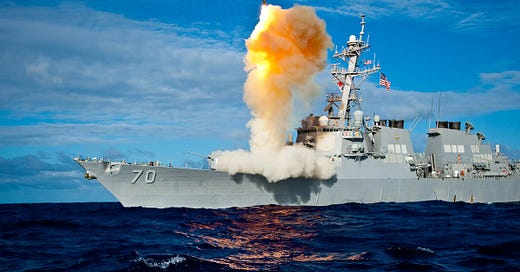

Discover more from Weapons and Strategy
Risking NATO's Future for Expansion of NATO in Ukraine
NATO Needs to Restore Confidence in its Deterrent
Barring some unforeseen contingency there will not be a war in Europe, beyond Ukraine, for some time to come. That prediction, however, is based on NATO's ability to deter a future Russian attack. NATO's deterrent capability, in light of the Ukraine war, is open to increasing doubt. If NATO is unable to restore confidence in its defenses, NATO will have to make deals with the Russians that will change Europe's strategic map.
As things now stand, NATO is an expansionist alliance and not a defensive alliance as originally conceived. NATO's changed posture came about after the collapse of the Soviet Union. NATO's policy makers decided to extend NATO coverage to the Baltic States and Eastern Europe, vastly expanding NATO's security zone. It was a gutsy decision based on a greatly weakened and mostly impoverished Russia. Over nearly a decade, Russia stopped producing weapons and ammunition, its military leadership ossified, and its plans for new weapons were put to the side because there wasn't money to finance them.
One of Vladimir Putin's accomplishments in his 17 years in power was to reverse the decline in Russia's military. That has not been easy. Russia's industry was far from modernized, and its core group of military leaders were not up to the task of managing factories run by the state.
The Russians were very slow to adapt. By the time of the second Nagorno-Karabakh war in 2020 it was clear that Russian-supplied hardware and tactics were inadequate and failed. The Armenians, who used mainly Russian equipment, saw their forces torn apart by Azerbaijan. A key factor in the war was the introduction of armed and loitering drones that were used to destroy Armenian air defenses, command posts, and heavy equipment.
By the start of 2022 Russia had not yet learned the lessons of 2020 nor had they adapted their tactics on how to deal with smart weapons including anti tank missiles and MANPADs air defenses. Russian drones first seen in the war were primitive and poorly made. Russian armor was picked apart by Ukrainian soldiers who ambushed hundreds of them as they traveled down roadways. Ukraine, with lots of western support in the form of smart weapons and real-time intelligence, pushed the Russians back and inflicted serious defeats on them.
Bleeding Ukraine (and NATO)
But all that changed in late 2022 and early 2023 as the Russians adapted. Spurning World War 2 style shock armor advances that were costly in equipment and manpower, Russia turned to an active defense system designed primarily by Russian general Sergei Surovikin. Russia then turned to a new generation of attack drones, concentrated artillery, and aerial dropped mines to stop Ukraine's army. Russia adopted the strategy of bleeding Ukraine, something Ukraine's American and European advisors did not correctly calculate when they trained nine Ukrainian brigades to attack Russia's defenses in the Zaphorize area.
Bleeding Ukraine has, at least so far, demonstrated that NATO's military ideas are defective and out of date. If looked at objectively, the huge losses of equipment and manpower by the Ukrainians is not sustainable in a NATO context. NATO lacks the trained armed forces or satisfactory equipment to withstand a modernized Russian army on the offensive.
One of the keys to the dilemma is artillery. NATO planners did not anticipate the level of ammunition needed in the new warfare paradigm seen in Ukraine. To support the fighting Europe and the United States have supplied long range artillery howitzer rounds, mainly 155mm, to Ukraine. These supplies are far below what is needed.
US soldiers train with M777 howitzers at Schofield Barracks, Hawaii, June 3, 2021 by US Army/Spc. Jessica Scott
Both the Russians and NATO are facing shortages, but the NATO shortages are far more significant than Russia's. Today even with a ramped up supply of shells, NATO won't be able to produce more than 163,000 shells a month while the Russians probably can potentially manufacture over 350,000 monthly.
The US raided its stockpile of 155 shells in Korea and Israel, both very dangerous moves. It left the US with nothing to defend Korea if Kim Jong-un starts a conventional war on the peninsula. North Korea has loads of artillery and plenty of shells. South Korea does not have enough.
The decision to take 300,000 155mm shells stockpiled in Israel and sent on to Ukraine likewise was a bad decision as it left Israel with little more than its own war stocks. With the fighting in Gaza and in the north against Hezbollah, Israel urgently needed 155mm shells from the United States, significantly impacting supplies set to go to Ukraine.
The Russians also felt some pinch and turned to their friends in North Korea and Iran. Both manufacture 152 mm (actually 152.4 mm) for Russian towed and self-propelled howitzers. Actual numbers being supplied are hard to come by. One report has it that North Korea already sent 500,000 shells and could send up to 2 million shells to Russia. There are reports that shells from North Korea and Iran are being stockpiled, either as a contingency or for a big offensive in Ukraine, possibly even both.
The Europeans are saying that they need to keep back ammunition from Ukraine because they have little or nothing left for their own defense. While some European companies, such as Rheinmetall, have stepped up production, it will take them years to actually produce the numbers needed. Rheinmetall has a new factory in Spain.
In the United States there are six ammunition plants, but the two most important are in Iowa and Pennsylvania.
These US factories are getting billions from the US to increase production. It is, however, hard to push them much harder because they use out of date manufacturing methods and find it hard to attract workers because of rough working conditions.
These US factories are over 80 years old. It takes about three days to produce one completed shell (not counting the time it takes to produce the propellant charges and fuses, which are manufactured elsewhere).
Iowa Ammunition Plant
The Iowa Army Ammunition Plant in Middletown, near Burlington, is the largest 155mm shell producer. The facility covers more than 19,000 acres ― nearly 30 square miles. It has more than 400 buildings and has a total storage capacity of 1.6 million square feet. It is owned by the Army but operated by a private company called American Ordnance LLC. Today it employs 830 civilians and around 25 military (mainly supervisory). In the 1960s the same plant employed 13,000 workers.
The plant is not automated. However, it does use some robots to carry out some of the most dangerous tasks such as moving around red hot shell billets. Otherwise the factory is much the same as it was years ago.
Scranton Ammunition Plant
The other big factory is in Scranton, Pennsylvania. The factory — built for the Delaware, Lackawanna and Western Railroad just after 1900 has produced large-caliber ammunition for the military going back to the Korean War. It has received $120 million to expand production, but won't reach that goal until 2025 at the earliest. It is a Government-owned Contractor Operate (GOCO) operation, like the Iowa plant.

The Scranton Ammunition Plant (SCAAP) was established in 1953 and operated by the U.S. Hoffman Machinery Corporation until 1963, when Chamberlain Manufacturing Corporation became the operating contractor. General Dynamics-Ordnance and Tactical Systems (GD-OTS) assumed operation of the facility from Chamberlain in 2006, and is the current operating contractor.
Like the Iowa Army Ammunition Plant, most of the production machinery is old.
While the Army has invested a great deal in ginning up the production of shells, it has not undertaken any real effort to update the manufacturing technology. Even DARPA (the Defense Advanced Research Project Agency) has not been receptive to introducing new technology to these installations.
US and NATO Ammunition Goal is Not Enough for Deterrence
The US Defense Department wants to ramp up 155mm shell production to 80,000 per month by 2028. European plans are less clear: the hope is to build between 20,000 to 55,000 per month "in future."
The NATO production goal is based on the Ukraine war numbers. But if a wider war started, or fighting elsewhere (Korean peninsula, China, Taiwan, Israel) or a war in Europe, those numbers go out the window.
One of the amazing features of the US and its NATO allies supplying millions of tons of ammunition and hardware to Ukraine is that the allies paid almost no attention to contingencies and freely raided stockpiles that were put there for US and NATO national security defense needs. What is true of 155mm ammunition is even more true of precision weapons whose supplies have been depleted. If it takes 3 days to manufacture a basic 155 mm shell; it takes two years or more to produce smart weapons.
The idea of expanding NATO to Ukraine may well have cost the NATO partners a far riskier future. Surely it has undermined NATO's deterrence, something the Russians and Chinese clearly grasp.





















Exact opposite of mission accomplished. Engage in a proxy war to weaken and deter Russia. Outcome is Russia with a greatly strengthened military and NATO exposed as a paper tiger.
Fascinating.
Why; Why can’t this type of information be part of the main stream media conversation?
National security: I say, bullshit.
America is the most heavily propagandized public because they have been successfully sold the narrative that they have a free press. I’m Canadian same thing but with an extra helping of fecklessness.